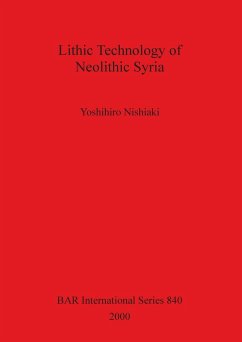This study examines the interpretative possibilities of stone tools for understanding cultural development in the Levantine Neolithic. The emphasis is on behavioural aspects of lithic industries such as core reduction and raw material use rather than on typological study of particular tool forms. Analysis of raw material procurement, core reduction and tool manufacturing processes were carried out for the material from Douara Cave II, Tell Damishliyya, Tell Nebi Mend and Tell Kashkashok II. The inter-relations between sites have been looked at and the results show that the change from Pre-Pottery to the Pottery Neolithic was characterized by the increasing use of locally available material, as well as a move from specialized blade to more expedient flake production. The suggestion is that the change in lithic technology closely reflected changing patterns in settlement system, subsistence economy and social organization.








